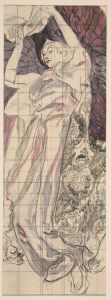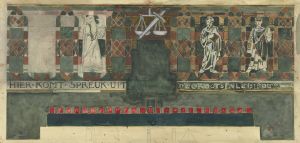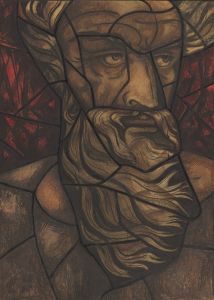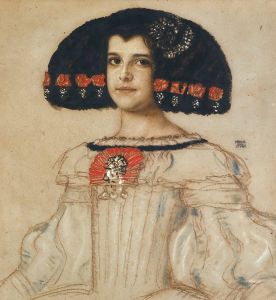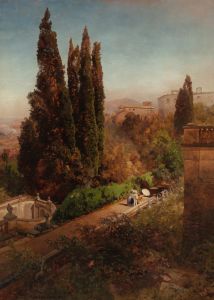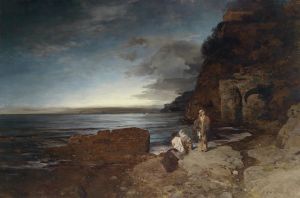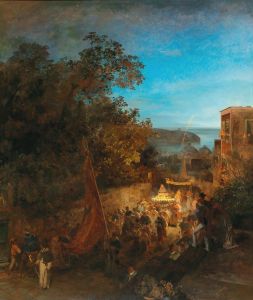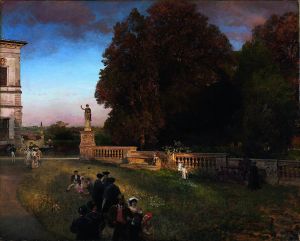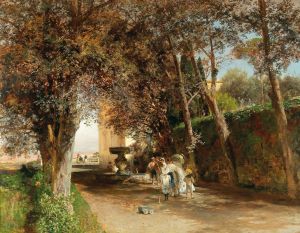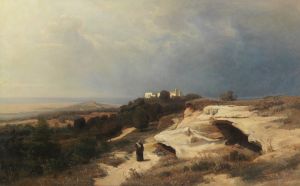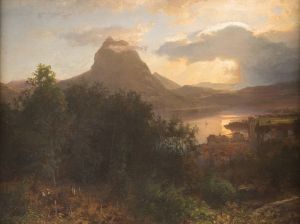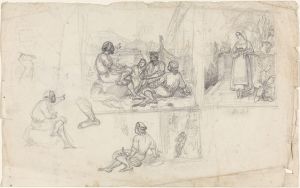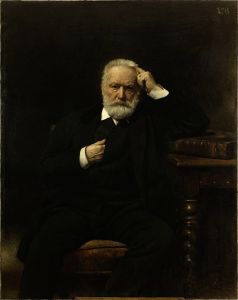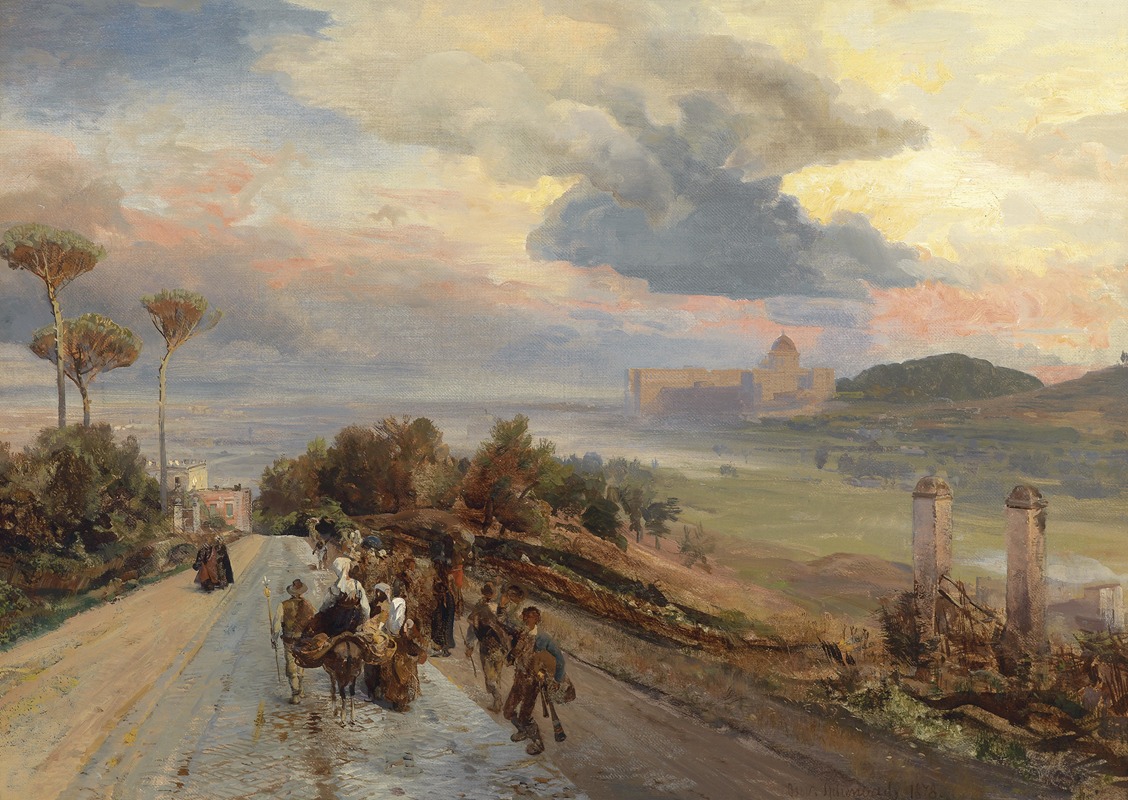
Via Cassia bei Rom
A hand-painted replica of Oswald Achenbach’s masterpiece Via Cassia bei Rom, meticulously crafted by professional artists to capture the true essence of the original. Each piece is created with museum-quality canvas and rare mineral pigments, carefully painted by experienced artists with delicate brushstrokes and rich, layered colors to perfectly recreate the texture of the original artwork. Unlike machine-printed reproductions, this hand-painted version brings the painting to life, infused with the artist’s emotions and skill in every stroke. Whether for personal collection or home decoration, it instantly elevates the artistic atmosphere of any space.
Oswald Achenbach was a prominent German landscape painter of the 19th century, known for his vivid and atmospheric depictions of natural and urban landscapes. Among his notable works is "Via Cassia bei Rom," which translates to "Via Cassia near Rome." This painting exemplifies Achenbach's skill in capturing the interplay of light and shadow, as well as his ability to convey the serene beauty of the Italian countryside.
"Via Cassia bei Rom" is part of Achenbach's broader body of work that often focused on Italian scenes, a common subject for many artists of the Romantic period. The Via Cassia is an ancient Roman road that stretches from Rome to the northwestern regions of Italy. It was historically significant as a major route for trade and travel during the Roman Empire. Achenbach's choice to depict this road reflects the 19th-century fascination with classical antiquity and the picturesque landscapes of Italy.
In this painting, Achenbach captures the tranquil atmosphere of the Roman countryside. The composition likely features the road winding through a lush landscape, bordered by trees and possibly distant hills or mountains. Achenbach's use of light is particularly noteworthy; he often employed a warm palette to evoke the Mediterranean climate and the golden glow of the Italian sun. This technique not only highlights the natural beauty of the scene but also imbues it with a sense of timelessness and nostalgia.
Achenbach was part of the Düsseldorf school of painting, which emphasized detailed and realistic portrayals of landscapes. His work is characterized by meticulous attention to detail and a keen observation of nature. In "Via Cassia bei Rom," these qualities are evident in the careful rendering of the natural elements and the harmonious composition that guides the viewer's eye through the scene.
The painting also reflects the influence of the Romantic movement, which valued emotion and individualism. Achenbach's landscapes often evoke a sense of awe and contemplation, encouraging viewers to reflect on the beauty and grandeur of the natural world. His work was well-received during his lifetime, and he was regarded as one of the leading landscape painters of his era.
Oswald Achenbach's contribution to art extends beyond his paintings. He was also an influential teacher, and his approach to landscape painting inspired many students and contemporaries. His works, including "Via Cassia bei Rom," continue to be appreciated for their artistic merit and their ability to transport viewers to the serene and idyllic settings he so masterfully depicted.
Today, Achenbach's paintings are held in various collections and museums, where they continue to be studied and admired for their technical skill and evocative beauty. "Via Cassia bei Rom" remains a testament to Achenbach's talent and his enduring legacy in the world of art.






